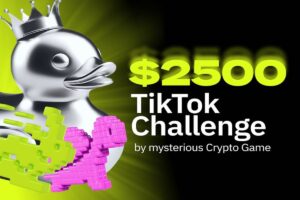Leading NFT creator Yuga Labs faced heavy criticism from the crypto community, including the creator of Bitcoin Ordinals, over its plan to auction a new Bitcoin NFT collection called “TwelveFold”.
The collection consists of 300 NFT-like images inscribed on satoshis using the Bitcoin-native Ordinals protocol. The top 288 bidders receive 288 images from the collection.
To participate in the bidding process, bidders need to send their entire bid amount in Bitcoin to a unique BTC address controlled by Yuga. Winners would pay the BTC they bid, while Yuga would manually return the BTC to unsuccessful bidders.
This plan drew criticism from some in the crypto community. They argued that manually conducting refunds for unsuccessful bids was outdated and inefficient.
The creator of the Ordinals protocol, whose Twitter handle is @ordinally, called the auction model a “scammer’s dream” and raised concerns about its potential misuse by bad actors. Casey Rodarmor also criticized the auction and didn’t mix his words, calling the conduct of the auction “degenerate bullshit.”
Dear @yugalabs,@veryordinally is right. Actions like this prove that for some entities and people: “Once a shitcoiner always a shitcoiner.”
— Casey Rodarmor (@rodarmor) March 6, 2023
If I, personally, Casey Rodarmor, ever see you, Yuga labs, the entity, fuck around with degenerate bullshit like this again, I will wash… https://t.co/COARsn4X0o
Despite the criticisms, many were excited to see a major player like Yuga Labs enter the Bitcoin space. In fact, some praised the company for attempting to bridge the gap between Ethereum and Bitcoin.
At the time of writing, the top bid for the TwelveFold collection was 1.11 BTC (around $25,000), with the lowest bid showing as 0.011 BTC (around $250).
In the past 24 hours, the Yuga Labs’ art pieces received an impressive 3,000 bids and the auction has netted $16.5 Million.
The auction for TwelveFold has begun and will conclude on the block immediately prior to 3pm PT tomorrow, March 6th, 2023. Good luck.https://t.co/gvl8IHpekC pic.twitter.com/xGWU9jdCoO
— Yuga Labs (@yugalabs) March 5, 2023
Bitcoin Ordinals – What Are They?
Bitcoin Ordinals is a protocol that allows users to add extra data, such as text, images, audio, or videos, to individual satoshis on the Bitcoin blockchain. These inscribed satoshis are known as “ordinals,” and they can be thought of as unique, one-of-a-kind digital artefacts or NFTs.
The addition of extra data to sats is made possible through the use of the “witness section” of Bitcoin transactions, which was introduced after the Taproot soft fork in 2021. This section allows users to add arbitrary data to transactions, including the inscriptions that make up ordinals.
One of the unique features of ordinals is that they are stored on-chain, which means they’re immutable and cannot be tampered with. Unlike traditional NFTs, which are often hosted on decentralized storage systems like IPFS, ordinals are stored directly on the Bitcoin blockchain and are validated in blocks along with other transactions.

Ordinals Growing in Popularity
Since the launch of the Ordinals Protocol in January 2022, nearly 100,000 inscribed satoshis have been minted, including collections of Ordinal Punks and Ordinal Penguins, which are Bitcoin offshoots of popular NFT collections.
And now with NFT trailblazer Yuga Labs getting involved, it’s added more intrigue to ordinals. Sure, enough Yuga Labs have faced some criticism, but the fact that they have finally launched their collection will definitely bring more interest to digital assets on the Bitcoin blockchain.
Author
-

Web3 ethical auditor with a drive to evaluate and promote responsible practices in the decentralized sphere.




